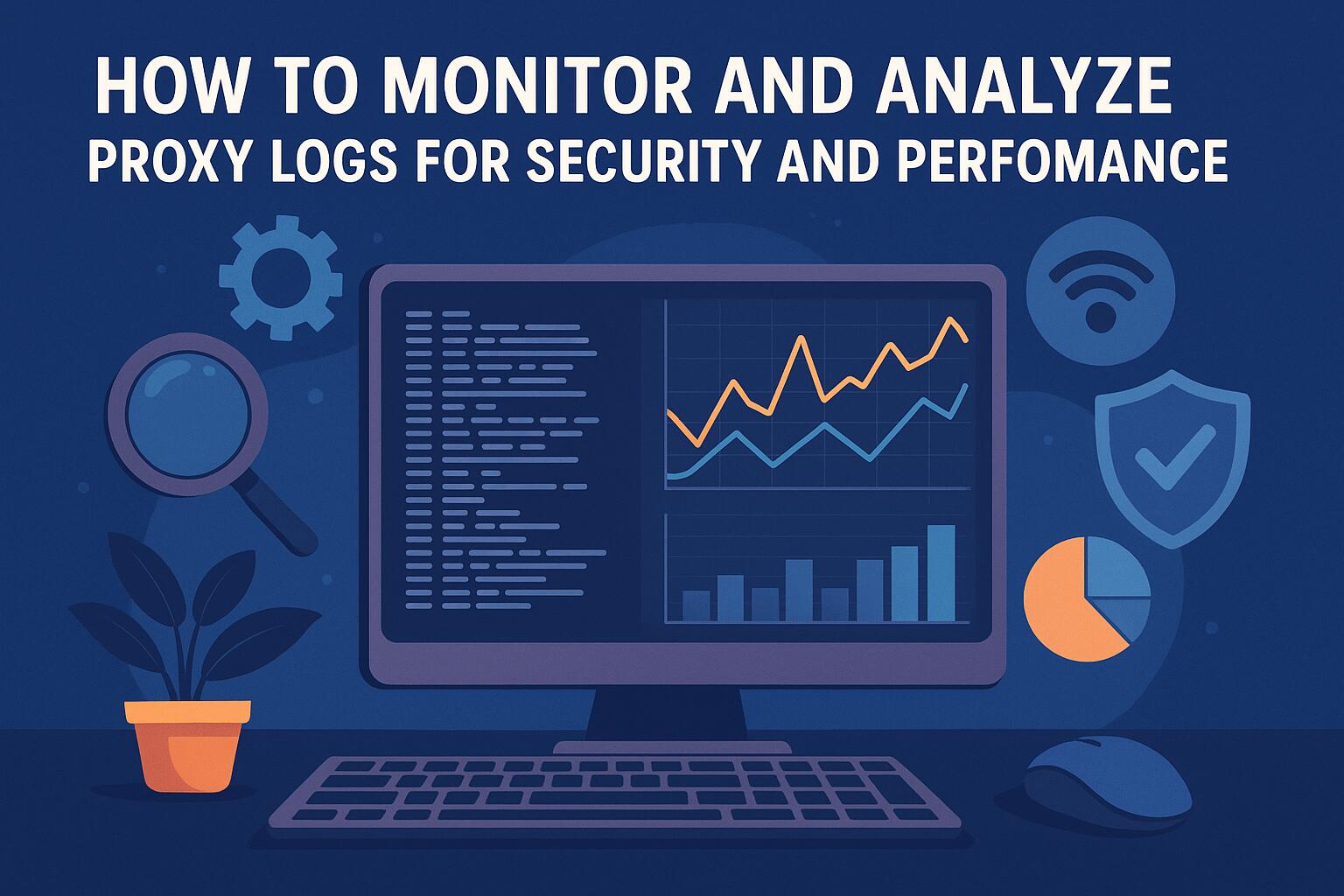Before you can monitor proxy logs effectively, you must ensure that your proxy server is properly configured to log all necessary information. Depending on your proxy software (e.g., Squid, Nginx, or Apache), the configuration will vary. Below is an example for Squid proxy:
# In squid.conf
access_log /var/log/squid/access.log squid
In the case of Nginx, you can configure access logging as follows:
# In nginx.conf
log_format main ‘$remote_addr – $remote_user [$time_local] “$request” ‘
‘$status $body_bytes_sent “$http_referer” ‘
‘”$http_user_agent” “$http_x_forwarded_for”‘;
access_log /var/log/nginx/access.log main;
These configurations ensure that all relevant client-server interactions are logged in a structured format, allowing for easy analysis later.
Key Metrics to Monitor in Proxy Logs
There are several key metrics in proxy logs that are critical for monitoring both security and performance. Here are a few that should be prioritized:
Request Rate: The number of requests per minute or hour can reveal patterns or anomalies in traffic volume.
Response Time: How long it takes for the proxy to respond to requests.
HTTP Status Codes: Status codes indicate the success or failure of requests (e.g., 200 for success, 403 for forbidden, 404 for not found).
Client IP Address: Identifying the client’s IP can help you detect suspicious behavior, such as high request rates from a single IP.
User-Agent Strings: Monitoring these can reveal unusual or malicious patterns of behavior, especially from automated bots.
Security Monitoring through Proxy Logs
Proxy logs are essential for identifying potential security threats. You can use the logs to monitor various types of attacks, such as DDoS, SQL injection, and credential stuffing. Some key strategies for security monitoring are:
Identify Suspicious IP Addresses: Monitor for IP addresses that generate excessive traffic or attempt to access restricted areas of the network.
Look for Unusual User-Agent Strings: Bots and other malicious actors often use non-standard user-agent strings.
Analyze HTTP Status Codes: A high number of 403 (Forbidden) or 404 (Not Found) status codes could indicate an attacker probing for vulnerabilities.
Examine Traffic Volume: A sudden spike in requests might suggest a DDoS attack.
To extract security-relevant information, you can use tools like grep to filter proxy logs:
grep “403” /var/log/squid/access.log
This command will return all logs where a “403 Forbidden” error occurred, indicating potential unauthorized access attempts.
Performance Analysis Using Proxy Logs
Performance monitoring through proxy logs focuses on detecting bottlenecks and ensuring the smooth operation of your network. By examining proxy logs, you can identify issues that affect response time and system throughput. Key performance indicators include:
Average Response Time: You can calculate the average response time by analyzing the time between requests and responses.
awk ‘{print $3}’ /var/log/squid/access.log | cut -d’:’ -f2 | awk ‘{s+=$1} END {print s/NR}’
This command will extract response times from the logs and calculate the average. If the average is abnormally high, further investigation is required.
Peak Traffic Times: Monitoring traffic volume over time can help identify peak usage periods and whether the server is handling them efficiently. For example, use awk to identify busy hours:
awk ‘{print $4}’ /var/log/squid/access.log | cut -d: -f2 | sort | uniq -c | sort -n
This will show the frequency of requests per hour, which can indicate periods of high traffic.
Automating Proxy Log Analysis
Manually analyzing proxy logs can be time-consuming and error-prone. To automate the process, consider using log analysis tools and scripts. Popular options include:
ELK Stack: A combination of Elasticsearch, Logstash, and Kibana for centralized log analysis. Logstash can ingest proxy logs, while Kibana provides visualizations to identify trends and anomalies.
GoAccess: A real-time log analyzer for web logs. It can process proxy logs and generate live reports on traffic patterns, errors, and response times.
Fail2Ban: A security tool that scans proxy logs for signs of brute-force attacks and automatically blocks malicious IPs.
For example, with GoAccess, you can run the following to generate an HTML report:
goaccess /var/log/squid/access.log -o report.html –log-format=COMBINED
This will generate an HTML report that can be viewed in any browser for quick analysis.
Using Proxy Log Data with SIEM Systems
Integrating proxy log data into a Security Information and Event Management (SIEM) system is a great way to enhance security monitoring. SIEM systems aggregate log data from various sources and provide real-time analysis, helping identify security incidents more efficiently. Many SIEM tools can automatically parse proxy logs and generate alerts for suspicious activities.
For example, using Splunk:
index=proxy_logs source=”/var/log/squid/access.log” | stats count by clientip, status
This Splunk query will count the number of requests per client IP and status code, which can highlight patterns that need attention.
Advanced Analysis: Correlating Proxy Logs with Other Data Sources
For more sophisticated analysis, correlating proxy logs with data from other sources, such as firewall logs, server logs, and application logs, can provide a more complete view of system behavior. This allows for identifying more complex attack patterns or performance issues that are not immediately apparent from proxy logs alone.
You can use tools like the ELK stack or Splunk to perform cross-log analysis, which is crucial for detecting multi-vector attacks and uncovering hidden performance bottlenecks.
index=proxy_logs OR index=firewall_logs source=”/var/log/squid/access.log” OR source=”/var/log/firewall.log”
| stats count by clientip, status, source
This query will combine proxy and firewall logs, giving a clearer view of any potential security risks.
Conclusion
HTML Example for Code
html
- Request Rate
- Response Time
- HTTP Status Codes
- Client IP Address
- User-Agent Strings
We earn commissions using affiliate links.






![FastestVPN Review [year]: Speed, Security, and Performance FastestVPN review](https://www.privateproxyguide.com/wp-content/uploads/2021/12/homepage-150x150.jpg)
